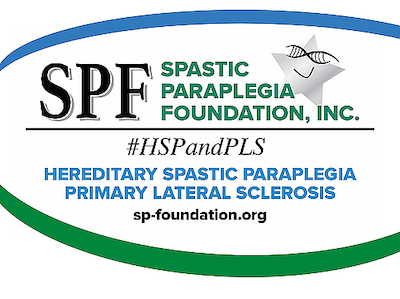An experimental Pfizer (PFE) gene therapy appears to help children with Duchenne muscular dystrophy, a lethal muscle-wasting disease that affects as many as 12,000 American boys, according to a small but closely watched study that will be presented Friday.
Two of the six boys who had been treated with the gene therapy for a year or more performed better on a test of muscle function, but its side effects were severe enough that two other boys were hospitalized.
The data represent yet another signal that gene therapy, in which engineered viruses are used to give patients pieces of genetic code they lack, is set to dramatically change medicine after decades of struggle. The results are being made public at the annual scientific meeting of the Parent Project Muscular Dystrophy, a patient advocacy group, in Orlando, Fla. Pfizer shared the results with STAT ahead of time under the condition that they not be shown to anyone else, including outside experts, due to their sensitivity.
Pfizer said that it would begin a study aimed at securing late-stage approval for the treatment in the first half of 2020. Seng Cheng, the chief scientific officer of Pfizer’s rare disease research unit, said in a statement that the initial data “may exemplify the potential for this modality to change patients’ lives.”
The data have been highly anticipated by investors in a smaller company, Sarepta Therapeutics (SRPT), which won approval in 2016 for a treatment for patients with Duchenne that have a specific genetic variant and is working on its own gene therapy.
A year ago, Sarepta presented results of its gene therapy in three boys, showing motor improvements in some. Its shares rocketed 43% in a day. At the time, the question was: Could Pfizer compete? The verdict, based only on a very small study: Probably, but Pfizer’s safety issues and the study timing still give Sarepta an edge.
Side effects
Pfizer tested two doses of its gene therapy: once with 100 trillion viruses per kilogram and once with 300 trillion. Four of the boys (Duchenne almost exclusively affects boys) had vomiting, loss of appetite, and fever. Three got better with anti-nausea drugs, but one boy, in the high-dose group, was hospitalized. Vomiting and fever resolved within five days, and other symptoms within three weeks.
But the experience of a second child in the high dose group is more worrisome for Pfizer and the gene therapy field. He developed a rapid immune response to the treatment that caused acute kidney injury, autoimmune destruction of red blood cells, and a reduced platelet count. He was admitted to the pediatric intensive care unit and received two doses of an immune-dampening drug, Soliris. He was discharged from the hospital after 11 days and his kidney function returned to normal after 15 days.
Pfizer stopped dosing patients in the study, and devised a new plan for monitoring them to catch such immune responses early. That plan has been approved by the committee of independent doctors charged with monitoring patients’ safety, but the study, expected to enroll another six patients, will not begin again until it has received relevant approvals at clinical research sites.
Signs of efficacy
Pfizer believes monitoring will keep patients safe, and it is going to move ahead quickly with the treatment because of signs that the drug is improving muscle function. Like Sarepta’s gene therapy, the treatment uses the adeno-associated virus (AAV) to sneak a strand of DNA coding for a shortened version of dystrophin, the protein that is dysfunctional in patients with Duchenne. Scientists use this mini-dystrophin because the full gene for dystrophin, one of the longest in human genetics, cannot fit in an AAV virus.
Researchers used various measures to determine whether the treatment was having an effect. One was a test called immunofluorescence, which could be used to see if the mini-dystrophin was present in the boys’ biceps after two months. Mini-dystrophin showed up in 38% of muscle fibers in the low dose group and 69% of those in the high dose group.
Another method, preferred by the Food and Drug Administration, is to use a measurement technique that expresses mini-dystrophin levels as a percent of the normal amount of dystrophin. Pfizer said that it does not believe existing tests are accurate enough, and developed its own, using a technique called mass spectrometry. By this technique, the average expression level of mini-dystrophin was 23.6% of normal for patients on the low dose and 29.5% for those on the high dose.
Two patients have been treated for at least a year, both on the low dose. These boys, who are 7 and 8 years old, saw their scores increase by 4.5 points on the NorthStar Ambulatory Assessment, a 34-point scale used to measure the severity of muscular dystrophy. They entered the study with scores of 24 and 25. For most patients with Duchenne at that age, such scores would either remain the same or decline.
Comparing apples and oranges
In its results last year, Sarepta tested a single dose of a slightly different virus in between the two Pfizer levels and a different truncated dystrophin protein. The boys were younger. Sarepta also used the traditional measurement of protein expression, called a western blot. By that technique, in the first three boys given the treatment, levels of the micro-dystrophin increased to 40% of normal. A fourth boy had an even more dramatic response, the company said last October, with micro-dystrophin levels that were 183% of normal. The four boys had an average improvement of 6.5 points on the North Star survey over nine months.
Sarepta shares are basically flat with where they were before last year’s announcement. Before the Pfizer data were released, analysts on Wall Street warned investors against making direct comparisons between the two studies because the measurements were so different.
But the Pfizer data came in below the expectations of an unnamed expert who spoke with Eun K. Yang, an analyst at Jefferies. That expert expected dystrophin levels above 50% for the Pfizer treatment, but didn’t expect data showing patients got better.
Brian Skorney, an analyst at R.W. Baird, criticized Pfizer for creating its alternative to the western blot in a June 26 note. “One potential reason we could see for Pfizer wanting to use a differentiated technique would be that this new method does not have strong benchmarks and its use could make it more difficult for analysts to make cross trial comparisons,” Skorney wrote. Pfizer said it did some western blot tests, but is not disclosing them.
Pfizer is minimizing one measure Sarepta highlighted: decreases in creatine kinase, an enzyme that shows muscle is being destroyed. Sarepta has argued that such decreases mean its treatment is working; Pfizer said it saw decreases but is not sure how to interpret them, and did not include them in its press release.
Analysts who are bullish on Sarepta had feared that Pfizer could start its late-stage study as early as the end of this year; that it won’t begin until 2020 is a positive. Sarepta is conducting a 24-patient late-stage study that could read out next year, but it will have to at least begin another study using different manufacturing processes before filing for approval with the FDA.
Sizing up the race
Pfizer bought its muscular dystrophy gene therapy in August 2016 when it purchased Bamboo Therapeutics of Chapel Hill, N.C., for $193 million in cash and up to $495 million that could be paid out in the future. Bamboo was spun out of AskBio, a gene therapy company founded by UNC-Chapel Hill professor Jude Samulski that raised $235 million in April; AskBio is not working on any other Duchenne products.
One of the supposed advantages of Bamboo’s technology is manufacturing. Pfizer said that in the first half of next year it will be making the treatment with “commercial-scale manufacturing processes” using 2,000-liter bioreactors that it will use for making the drug in its Phase 3 study. That will be a plus with regulators and could help it speed ahead.
That leaves Sarepta and Pfizer in a heat. (Solid Biosciences, developing a similar therapy, is left far behind.) The safety issues seen in the Pfizer study are serious, but may be manageable as doctors learn to use its treatment. Comparing the studies, Sarepta’s treatment looks a bit better, but that could be illusory, especially as Pfizer moves to testing a higher dose.















